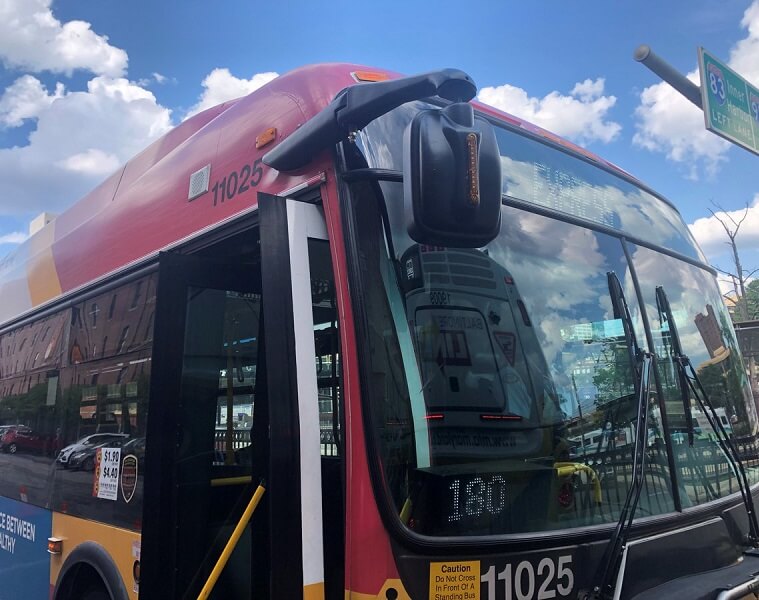Central Md. Leaders Seeking Huge Infusion of Cash for Struggling Transit Systems

For the second year in a row, elected leaders from Central Maryland are urging the General Assembly to dramatically boost spending on the state’s existing bus and rail system.
The leaders said that without a three-quarters of a billion dollar infusion of new funds, commuters and employers in the Baltimore region would remain hamstrung by a transit network that is not reliable.
The plea for funding was issued by Baltimore Mayor Brandon M. Scott (D), state lawmakers and the top elected officials from Baltimore County, Anne Arundel County, and Howard County at a news conference at the Johns Hopkins Metro Station in Baltimore on Monday. They were joined by representatives from Johns Hopkins University and Health System and a union representing transit workers.
“Too many people are standing in cold this morning, waiting for a bus that isn’t coming,” said Del. Brooke E. Lierman (D-Baltimore City). “Too many kids are at home in the evenings, waiting for their parents to get home but they’re stuck on the Light Rail that isn’t moving.”
Lierman and Sen. Cory V. McCray (D-Baltimore City) are the chief sponsors of the Transit Safety and Investment Act (Senate Bill 199 and House Bill 114). The legislation would pump an extra $757 million into the state’s bus and rail capital budget between Fiscal Years 2023 and 2026.
A spokesman for the Maryland Department of Transportation said Secretary Greg Slater’s budget proposal for FY 2021-2026 will seek “to make investments in all transportation modes to support safe and reliable operations, ensure our assets are in a state of good repair, and enhance passenger comfort and convenience.”
“This budget will reflect the focus on system preservation across our transportation network, as well as building a shelf of projects for the next generation,” said Erin Henson, the agency’s director of public affairs.
Lawmakers attempted to boost transit funding last year, in the wake of a 2019 report showing that Maryland faced a $2 billion shortfall in what was needed to keep its existing rail and bus operations in a state of good repair.
That measure cleared the House of Delegates in the final week of the pandemic-shortened 2020 session, but it died in the state Senate without a vote.
Lierman, a just-announced candidate for state comptroller in 2022, predicted the measure would pass both chambers this year.
“Historically our transit system has been under-invested in,” said Scott. “Anyone who has tried the system — and tried going from point A to point B — knows how hard it is.
“This system does not work,” the Baltimore native added.
Mike McMillan, the president of Amalgamated Transit Union Local 1300, said front-line workers bear the brunt of customer complaints about the system, even though they wield no power over the budget.
“Once they get the tools and the buses that are needed to help them perform their job successfully, they will ensure that the public will stay safe and get to where they need to be,” he said.
The coalition pushing for additional funding is similar to the group that came together last fall to fight proposed cuts in bus and rail service.
Civic leaders in the Baltimore area say the state’s largest city is hurt by the lack of a more robust transit network — and they look with envy at the Washington, D.C., suburbs, which boasts a sprawling Metro system, a future Purple Line and where the state is looking to spend $11 billion on highway widening projects to ease congestion in Montgomery County.
Baltimore County Executive John A. Olszewski Jr. (D) said the region is still reeling from Republican Gov. Lawrence J. Hogan Jr.’s “short-sighted decision to kill the [proposed] Red Line.”
“With the swing of a pen and without much hesitation, we lost decades of planning, forfeited hundreds of millions of dollars in federal funding and set our residents back a generation,” he said.
Lierman said “our transit breaks down more than any other system of comparable size in the United States,” a reference to a federal report released last year.




 Creative Commons Attribution
Creative Commons Attribution